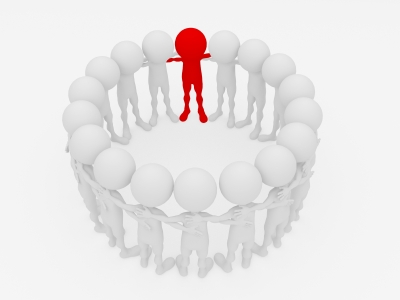Breaking Down the Team Development Process
Define Your Business VisionThe first step in the team development process is to establish your organization’s strategic goals and business vision. This way, any teams that you develop in the future will know the bigger picture as well as their role in the organization’s long term concerns. Furthermore, a well developed business vision will also help your organization to create new teams in the future, since there is already a clear objective on which to base all future team development strategies.
Design The Team Structure
Team structures refer to the hierarchy and chain of command of each team, and they affect each team member. This structure helps each member understand how their teams work as well as their role in the entire structure. For example, an R&D team could have a team structure which includes fifteen assistant researchers who each have to answer to 4 researchers. Likewise, each of these researchers answer to a lead researcher who, in turn, interacts with analysts and other department leaders to better accomplish the goals of various company projects.
Other teams will, of course, require other team structures, but the the important point to remember about these structures is that they provide your organization with a workable template upon which to organize and establish new teams from new and existing personnel at short notice. In short, team structures allow managers and core personnel to better manage their teams, while at the same time, help them create new ones more efficiently. So in organizing your company’s teams, be sure to have several team structure templates in place, so that your work will be a whole lot easier.
Identify the Business Function for Each Team
Once your teams are organized to serve your organization’s goals, the next step should be to discuss how these goals are to be accomplished. To do this, each team must be provided with a function or set of functions. These functions are already well known in most organizations, and several good examples include Administration, Research, Customer Support, Marketing, Accounting, etc…
You can organize your teams to handle one or several functions, but always try to organize them in such a way that they help to promote efficiency in the workplace. Furthermore, each team’s functions must be fluid, versatile and compatible with the functions of other teams, so as to ensure a healthy relationship between individual teams and team members. Once you have established each team’s function, organizing individual members will be a lot easier, since everyone knows what their teams are supposed to do.
Leverage Team Strengths and Eliminate Team Weaknesses
After you have developed the team structures for your organization’s various teams, your next goal should be to observe their performance and make corrections where they are needed. For example, let’s say that in a particular team, there are certain redundant tasks, which take up a significant portion of each member’s work hours. Because such tasks are not necessary, they should be eliminated and the team’s functions restructured to make them more efficient.
These kinds of reforms are done all the time, so don’t be overly concerned about any problems that your organization’s teams might have in the course of their work. Team structures need to be updated, improved and optimized on a regular basis. There’s also no such thing as a perfectly organized team. So after you’ve established your organization’s teams, be sure to carry out regular reviews to address their problems on a consistent basis.
Provide Ongoing Support and Assistance to Each Team
Aside from leveraging the strengths of your team, you should also provide them with ongoing support. This support can come in the form of incentives, leadership coaching, personnel training or additional equipment. The team development process requires these things, since they help to improve the performance of both the team leaders as well as their subordinates. By providing assistance to each team, important reforms and developments are more easily implemented. Furthermore, supporting each team in your organization also helps each individual member, which in turn helps to improve the teams that they belong to.
Evaluate The Outcome of the Team Building Process
Finally, you will need to evaluate the outcome of your team building efforts. This evaluation should be designed to analyze not only the performance of each team with regards to their goals, but also their efficiency, performance and how each member of the team carries out their assigned roles. This evaluation can be done on an annual or bi-annual basis, depending on the needs of your organization’s teams.
Evaluations can also either be carried out on individual members or on the entire team as a whole, so feel free to choose a process that you prefer. Just make sure that your evaluations take into account all of the important matters that affect each team in your organization. If the evaluations detect problems, irregularities or complaints from the teams then they should be addressed and given solutions either through direct action or through organizational assistance.
Conclusion
Team development is as natural to organizations as breathing is to a living body. It’s just something that comes about whenever you bring several people together. However, despite this group oriented behavior, teams as well as their members still need to be managed in order to optimize their performance and to establish good interaction with other teams and personnel. This is why a good team development process is always important for any organization, because without this process, your teams will not be able to perform their work efficiently.

